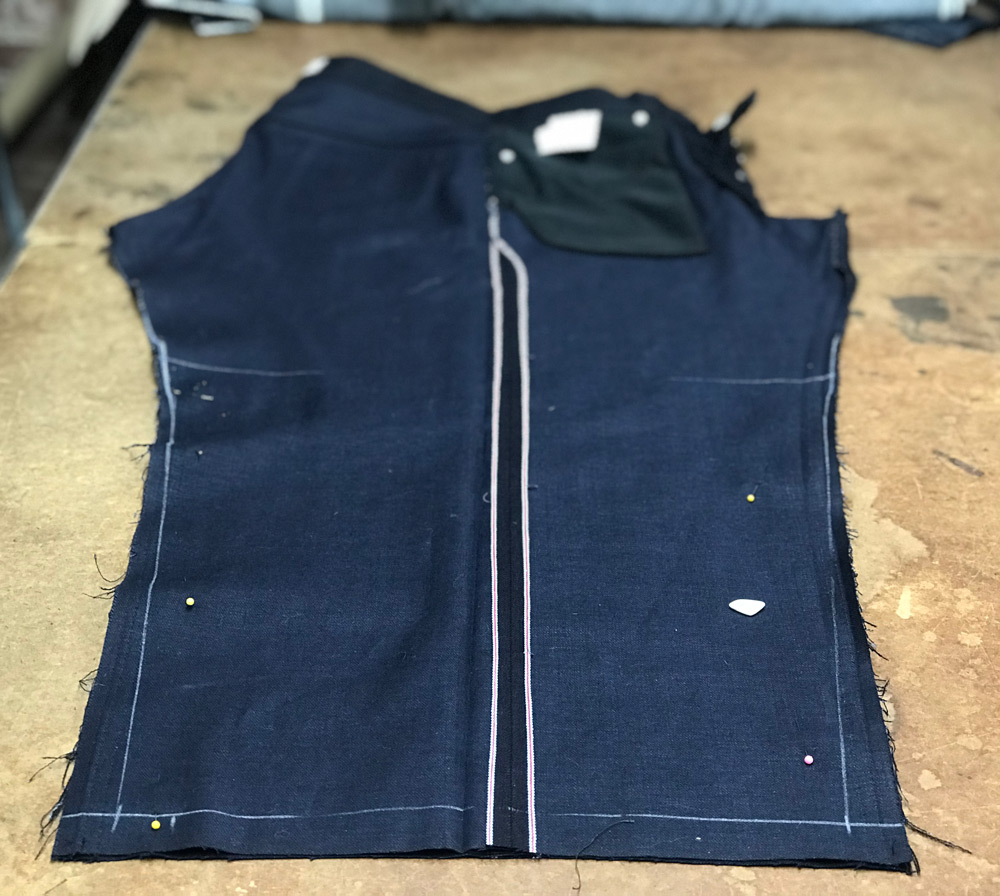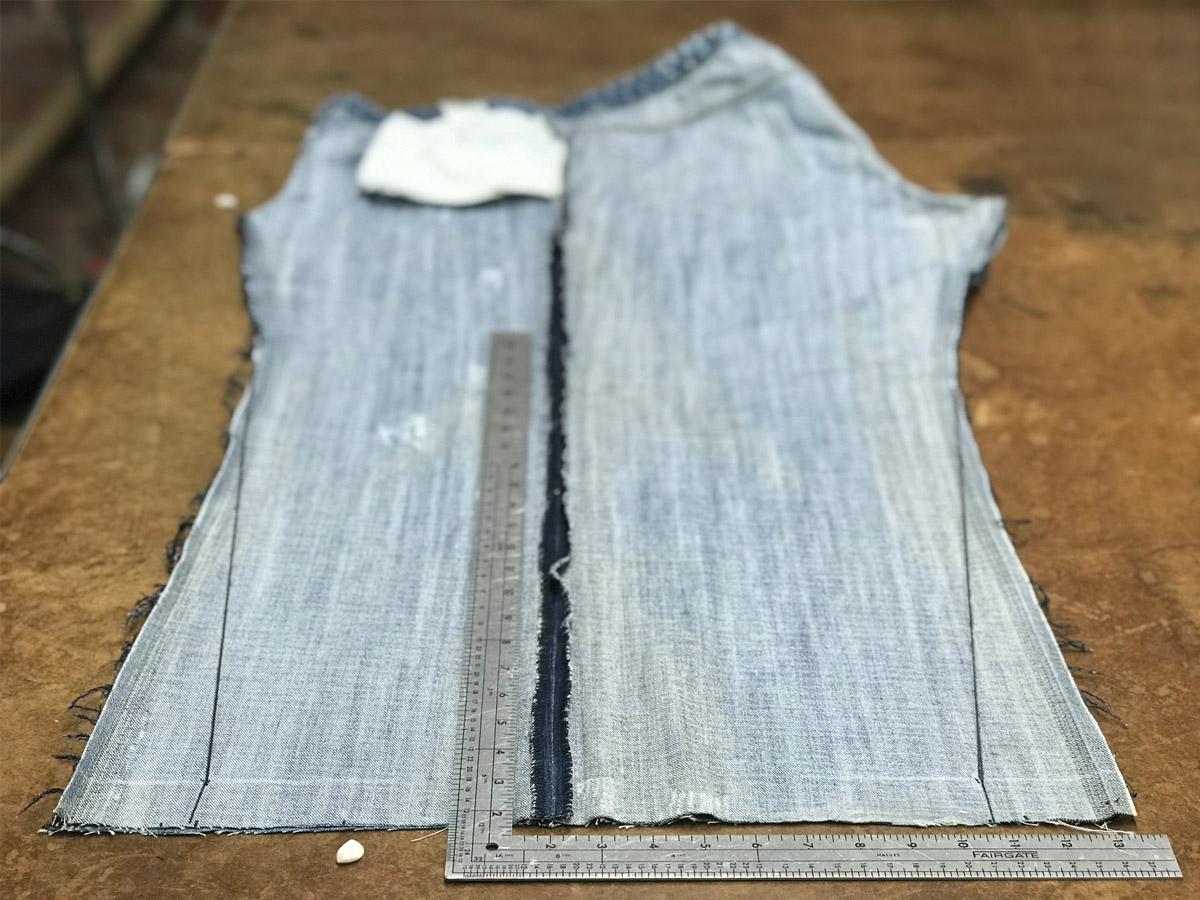Twisting & Tapering from the inseam explained

By Maurice Malone Published June 28, 2020
The proper way to taper jeans, except for bell-bottoms, flared jeans, and a small amount of others, is from the inseam. Unless a tailor is working with the correct equipment, tapering from the inseam may not be the easiest method. This is why the average tailor will avoid it. For us, there are no short cuts. Our goal is to make alterations undetectable. In tapering flat-felled constructed jeans, we take apart and then reconstruct the entire inseam. In cases where jeans are sewn with overlock construction, we completely remove the entire top stitch and re-sew it so there are no joined stitch lines or unmatching thread colors on the seam after tapering.
Does tapering from the inseam cause twisting?
The short answer is of course not. Two things generally cause twisting. Most common is the fabric shrinkage. The vertical and horizontal (warp & weft) shrinkage varies widely in denim. It can cause pulling in one direction as the fabric shrinks and ages. The other is uneven sewing at the factory. If one panel of the leg is sewn as little as 1/4-inch off, it will cause the leg to turn slightly. At the factory, a sewing machine operator could sew the leg panels closed with the ends uneven because of stretching. Instead of re-sewing, the operator will cut off the extra fabric so it is even enough for hemming. This will cause the leg to twist a little. Often, it goes unnoticed at the time of purchase.
A good way to identify the two types of twisting is simple. If both legs visibly twist in the same direction, then it is likely that fabric shrinkage was the culprit. However, if only one leg seems to be twisting, then its probably the result of a sewing error. Unless done purposely, like on Naked & Famous jeans, patterns most commonly are drafted so both the inseams and outseams sit to the front side. The back panel is typically wider. Laying jeans flat, the outseam line should fall straight down, slightly towards the front on the front leg panels.
Most denim jeans have straight outseams, getting its shape from the inseam. Using the picture above as a reference, the jeans have been butterflied to show a view of a pants leg opened up at the inseams. At the center, you can see the (selvedge) outseam is a straight line. The inseam, however, has a curved cut that provides the shape of the jeans. Proper jeans tapering is crucial for multiple reasons. If incorrectly tapered you could likely be left with a highly distorted shape. Selvedge jeans gain their trademark aesthetic at the outseams. Tapering from the outseam causes wider exposure of the selvedge or overlock sewn edge (seen in the photo below) if the denim was made on a power loom. This alters the appearance and increases the bulk along the outseam. If your tailor tapers your jeans from the outseam, you can kiss goodbye the option to roll or cuff your jeans goodbye.

Example of a Flare Leg Jean constucted with overlock sewn straight outseams & new leg shape drawn for tapering
Tapering from the inseam won't cause the legs of your denim to twist. It's the recommended way to maintain the aesthetic and shape of most jeans. With proper tailoring, you can alter your jeans to the perfect fit without jeopardizing its signature details.
